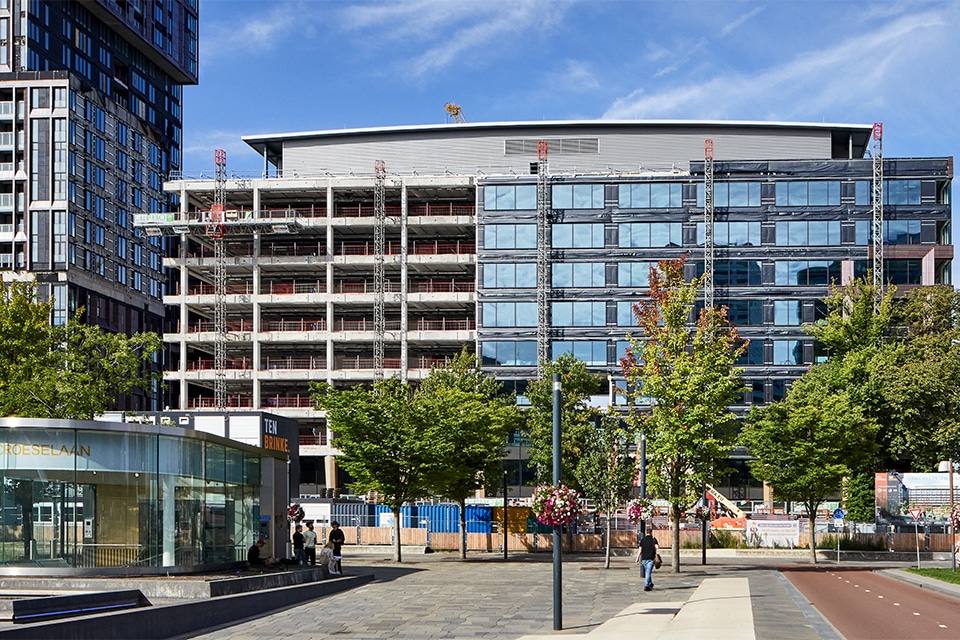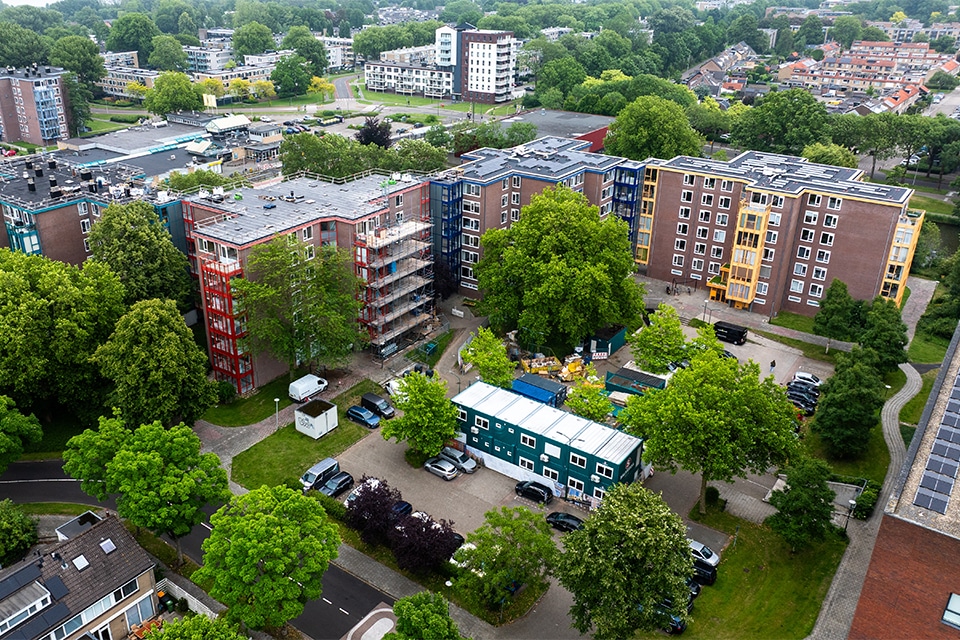
Beautiful, colorfast and circular
Houses and apartments with special cladding
Proeftuin Erasmusveld will feature a wide range of housing: apartments, townhouses and single-family homes of all shapes and sizes. The homes are sustainable both inside and out. Energy is generated by means of solar panels, heat and cooling come from the ground and sedum roofs and wadis regulate water buffering. If all goes well, it will soon be teeming with birds, butterflies, frogs and bees.

Sustainability is the guiding theme in the new residential area Proeftuin Erasmusveld. A total of some 370 homes will be built in phases. 108 owner-occupied apartments were due for completion in mid-2022. Currently, two residential blocks are being built with 71 rental and 65 care apartments and also 125 ground-level owner-occupied homes. Low-carbon and nature-inclusive products are chosen wherever possible.

Self-supporting masonry
The masonry of the apartment buildings is striking. Whereas masonry is normally supported by gable supports and lintels, here the architect has chosen masonry without these supports. With temporary supports and murfor in the joints, the forces of the masonry are transferred to the piers with a thickness of 320 mm. This makes the masonry self-supporting. "In combination with the height of the building, this is quite rare," says René Bestebreurtje, project manager at Van Wijnen.
NEOLIFE® cladding
For the ground-level dwellings, NEOLIFE® cladding, a naturally pure wood composite that contains virtually no plastic, was chosen above the robust masonry. "These panels are made from residual materials from the sawmill in southern France, among other things," explains project manager Arnoud Koppe. "With lignin and mineral pigments, this has been processed into a material that is beautiful, hard, colorfast, circular and maintenance-free. It is also still fairly new. To my knowledge, NEOLIFE® has never been applied on such a large scale."
With these characteristics, the cladding fits seamlessly with the ambition of Erasmusveld. This neighborhood is for people who want to live in a way that matters. Natural heat/cold sources, PV panels, low-energy installations, pent roofs, sedum vegetation, wadis, collective spaces and communal gardens create a sustainable society here. That includes a sustainable appearance.
- Client BPD Development, Delft
- Architect apartments Workshop architects, Amsterdam
- Architect homes Heren 5 Architecten, Amsterdam
- Contractor Van Wijnen, Dordrecht




